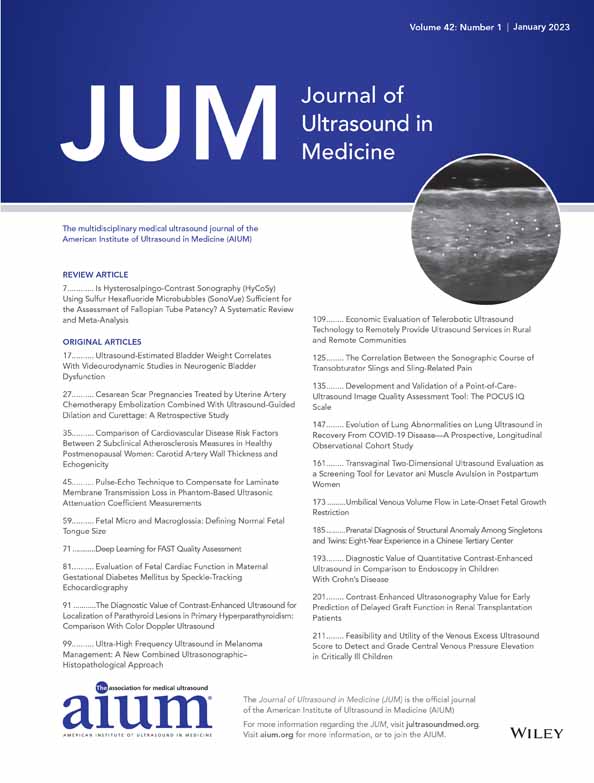Compression Elastography and Shear Wave Ultrasound Elastography for Measurement of Brain Elasticity in Full-Term and Premature Neonates
A Prospective Study
This study was supported by the Youth Foundation of the Third Affiliated Hospital of Guangzhou Medical University (2017Q10) and the Medical Science and Technology Research Foundation of Guangdong Province (2019298).
Huihui Yang and Huibing Li have contributed equally to this work and share first authorship.
Abstract
Objectives
To investigate the brain tissue elasticity in normal term and premature neonates using compression elastography and shear wave elastography.
Methods
This prospective observational study enrolled term and premature neonates admitted to the Third Affiliated Hospital of Guangzhou Medical University between July 2019 and December 2020.
Results
A total of 106 neonates, including 65 premature neonates and 41 term neonates, were enrolled. The elastic modulus of the frontal white matter in males was significantly lower than in females (11.67 ± 0.98 versus 12.25 ± 1.31, P = .030), but the shear wave velocity of the thalamus in males was significantly lower than in females (1.18 ± 0.13 versus 1.82 ± 0.10, P < .001). There was no significant correlation between real-time body weight and brain tissue elasticity including elastic modulus and shear wave velocity. But, the shear wave velocity of parietal white matter (r = 0.319, P = .014) and thalamus (r = −0.268, P = .040) and the elastic modulus of parietal white matter (r = 0.356, P = .006) were correlated with corrected gestational age.
Conclusions
Clinicians may consider using elastography to determine brain tissue elasticity in term and preterm neonates.




